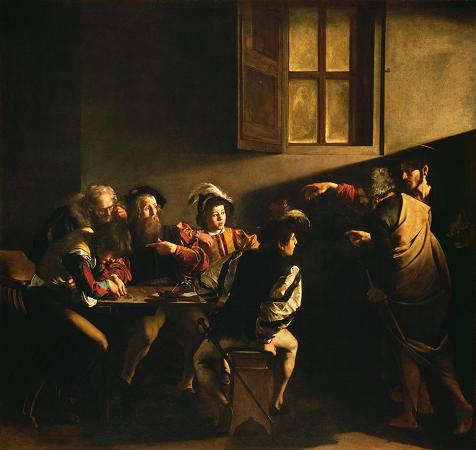Giovanni Baglione (1566 - 1643). Giovanni Baglione was an Italian Late Mannerist and Early Baroque painter and art historian. He is best remembered for his acrimonious and damaging involvement with the slightly younger artist Caravaggio and his important collection of biographies of the other artists working in Rome in his lifetime, although there are many works of his in Roman churches and galleries and elsewhere. He was born and died in Rome, but from his own account came from a noble family of Perugia. A pupil of the obscure Florentine artist working in Rome, Francesco Morelli, he worked mainly in Rome, initially with a late-Mannerist style influenced by Giuseppe Cesari. After an intermezzo Caravaggesco when he was heavily influenced by the young Caravaggio in the early years of the new century, and a Bolognese-influenced phase in the 1610s, Baglione's final style became more generalized and typical of Roman Early Baroque painters such as Guercino, though always reflecting his training in the Central Italian tradition of disegno, the absence of which he criticized in the Caravaggisti. To Rudolf Wittkower, his style vacillated between progressive trends, without absorbing them fully. He spent 1621-1622 in Mantua as the court artist of Duke Ferdinando Gonzaga, where the exposure to the fabulous Gonzaga collection of Venetian paintings influenced his style. Otherwise he remained in Rome, where he was long successful in attracting commissions from the Papal court and aristocracy. His paintings have been described by the art historian Steven F. Ostrow as extraordinarily uneven, at best, competent, and his work pales in comparison with that of many of the contemporary artists he emulated, while his chalk and pen and ink drawings reveal a force and lyricism rarely found in his paintings. The quality of his work declined sharply in the 1630s, by which time he was in his late sixties. He had a successful career, receiving a Papal knighthood in the Supreme Order of Christ in 1606, and his long involvement with Rome's Accademia di San Luca and his biographies reveal an artist obsessed with status. He was a member of the Accademia from 1593 until his death, and three times President. Apart from the regular later title of first historian of the Roman Baroque, in his lifetime he was also nicknamed Il Sordo del Barozzo as he suffered from deafness. He died in Rome on 30 December 1643 at the age of 77. He published two books, The nine churches of Rome, and The Lives of Painters, Sculptors, Architects and Engravers, active from 1572-1642. The latter is still seen as an important historical source for artists living in Rome during the lifetime of Baglione. His first book was an artistic guide to Rome's nine major pilgrimage churches, which is notable for its period in taking an interest in the works of all periods, and remains useful to scholars as an account of these churches at a point before many subsequent alterations. It marks a watershed in the guidebook literature of Rome-the turning point between the older tradition of devotional guidebooks. and the modern tradition of artistic guides. His biographies cover over two hundred artists in various media, all of whom had worked in Rome and were dead by the time he published. Relatively few other sources, other than contracts and the like, exist for most of these figures, and Baglione's work often remains the basis for their biographies, being drawn on extensively by Bellori, Passeri and others, as well as modern writers. Baglione had known a large number of his subjects personally and his attributions and basic factual information is considered generally reliable, although like Vasari and most intervening biographers of artists, he sometimes repeats anecdotes uncritically. He carefully notes information about the social status and progress of his subjects, and is often very quick to criticise and moralize over human failings and bad habits. He recorded all signs of social status, including houses, dress, collections, permission to wear a sword, splendid funerals, and tombs. Similarly, he never failed to mention if an artist was a member of his beloved Academy of St. Luke, had been elected to the Virtuosi del Pantheon, had been knighted, had been well paid for his work, or had been employed by noble patrons. And the corollary to this is Baglione's delight in recognizing artists as virtuosi, not simply as an expression of their artistic ability but in reference to their possessing literary, musical, or dramaturgical skills. Running throughout Le vite, in other words, is an abiding concern with the honor of the profession-with the elevated status and nobilta of the artist as gentleman. As far as possible, his descriptions of works concentrated on those accessible to the public.
more...













